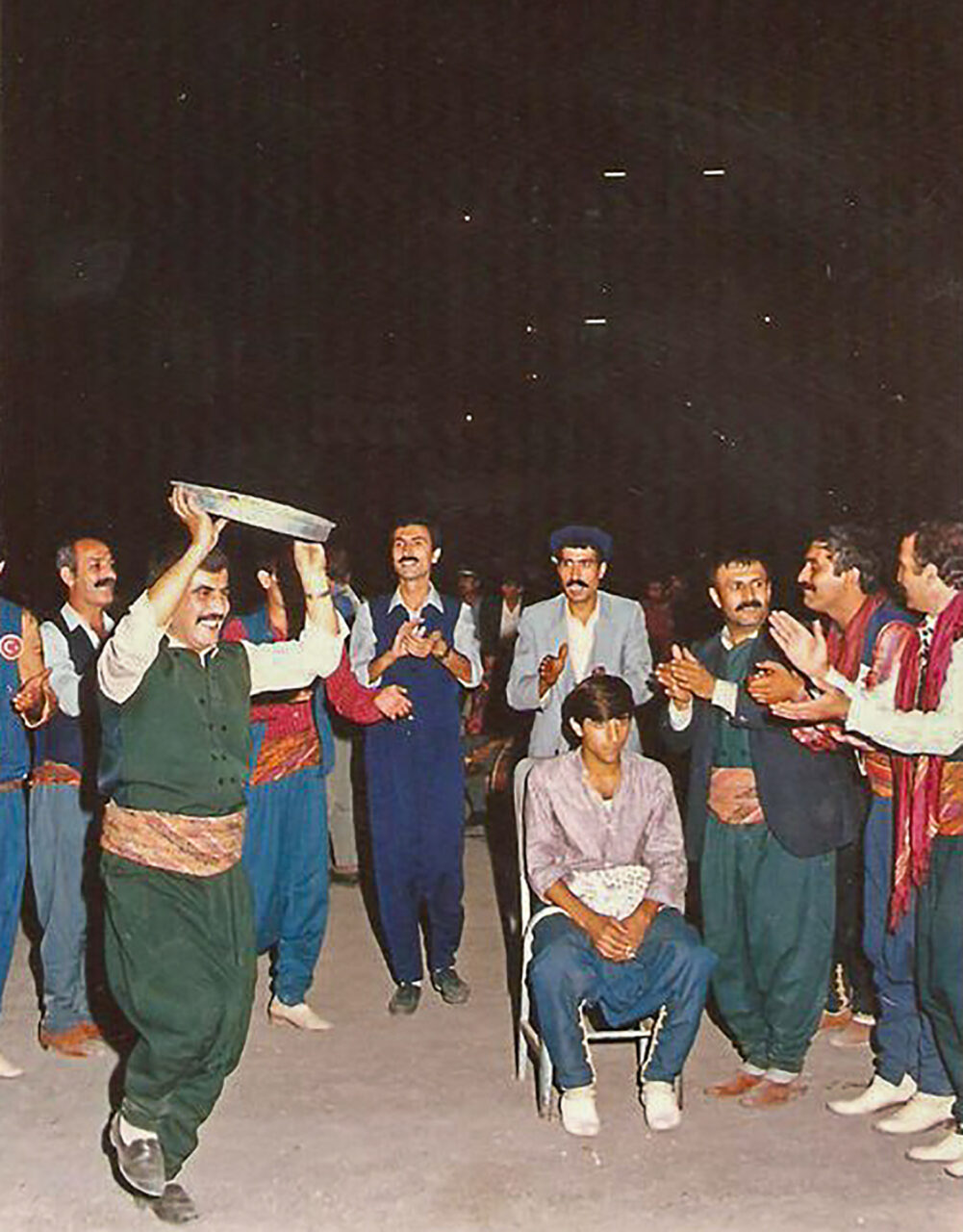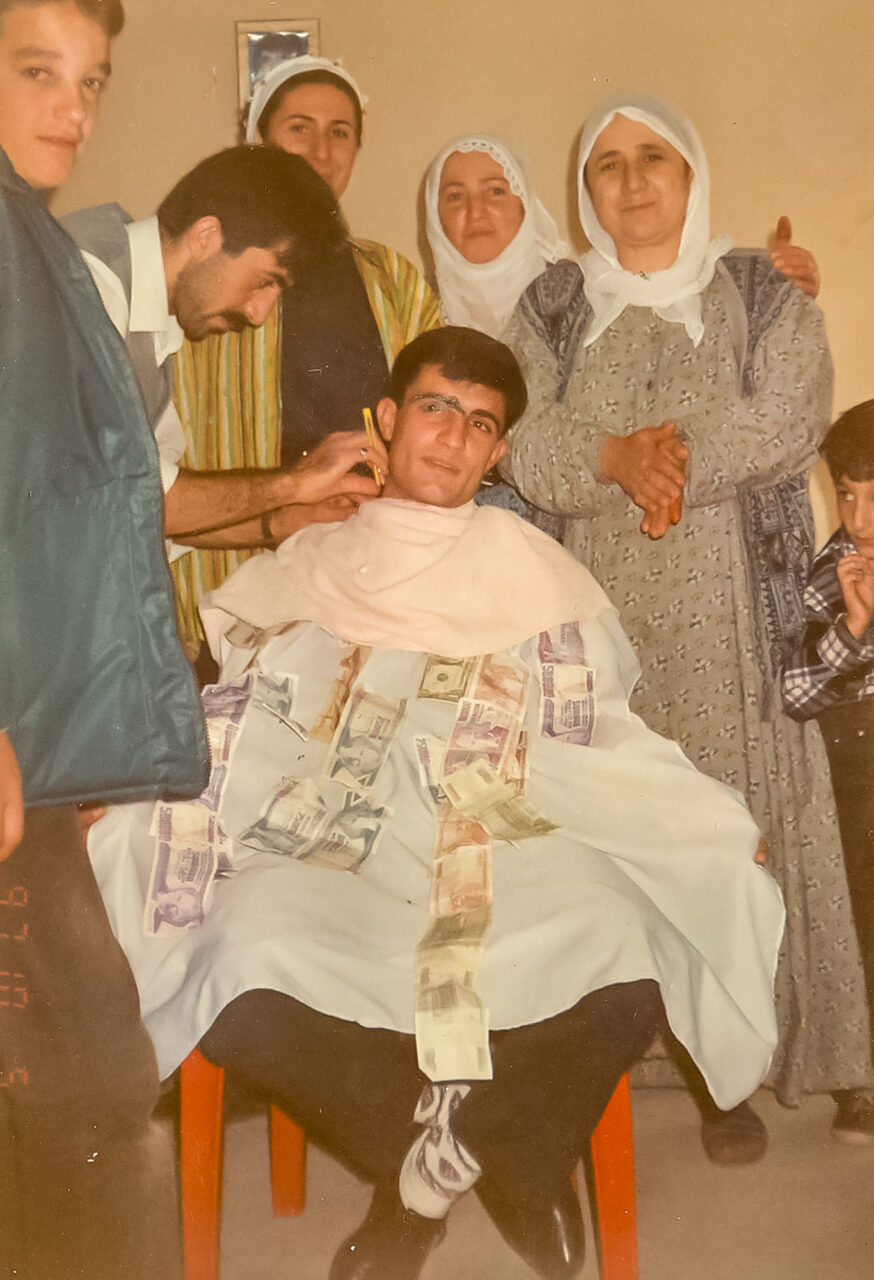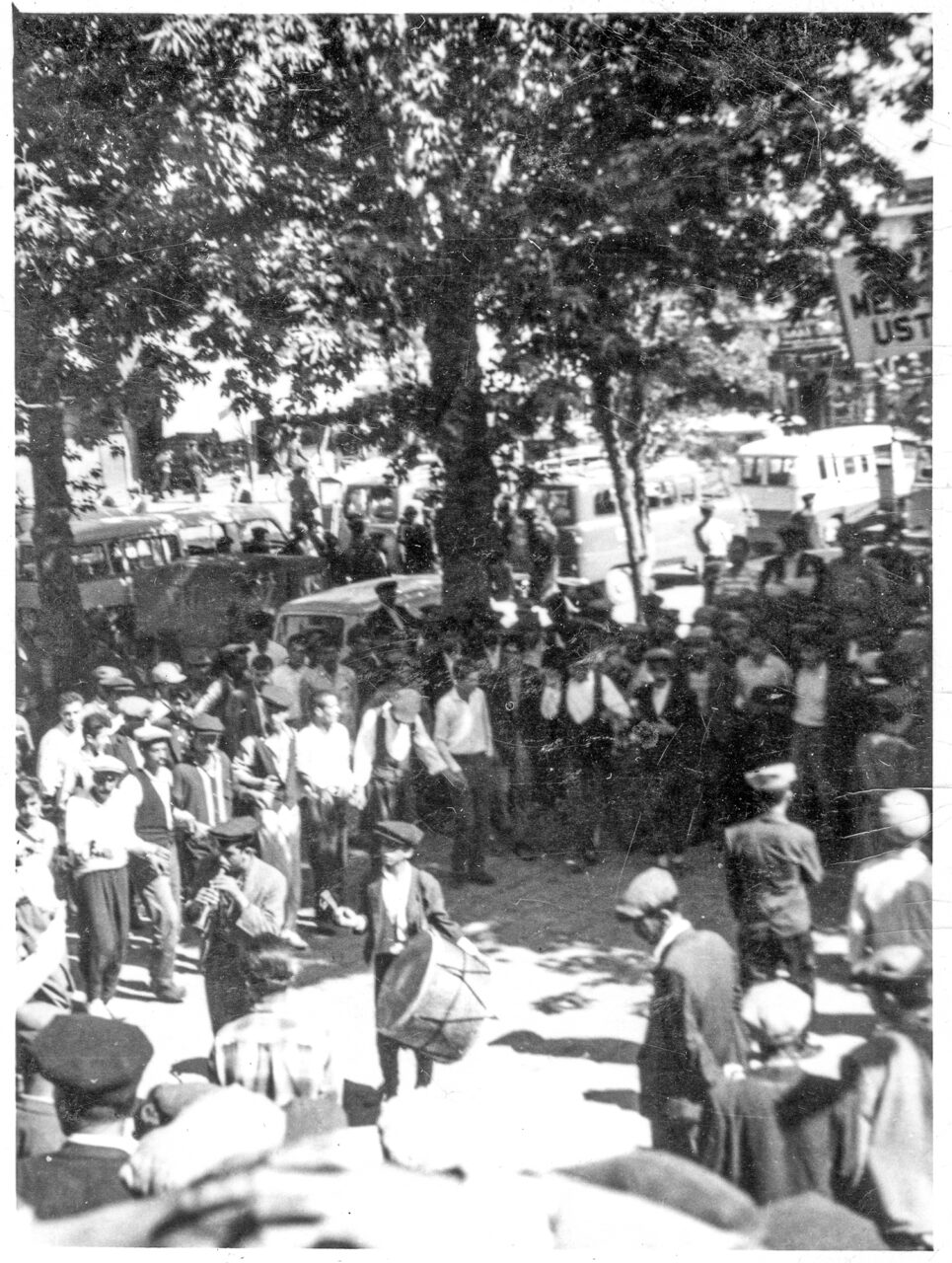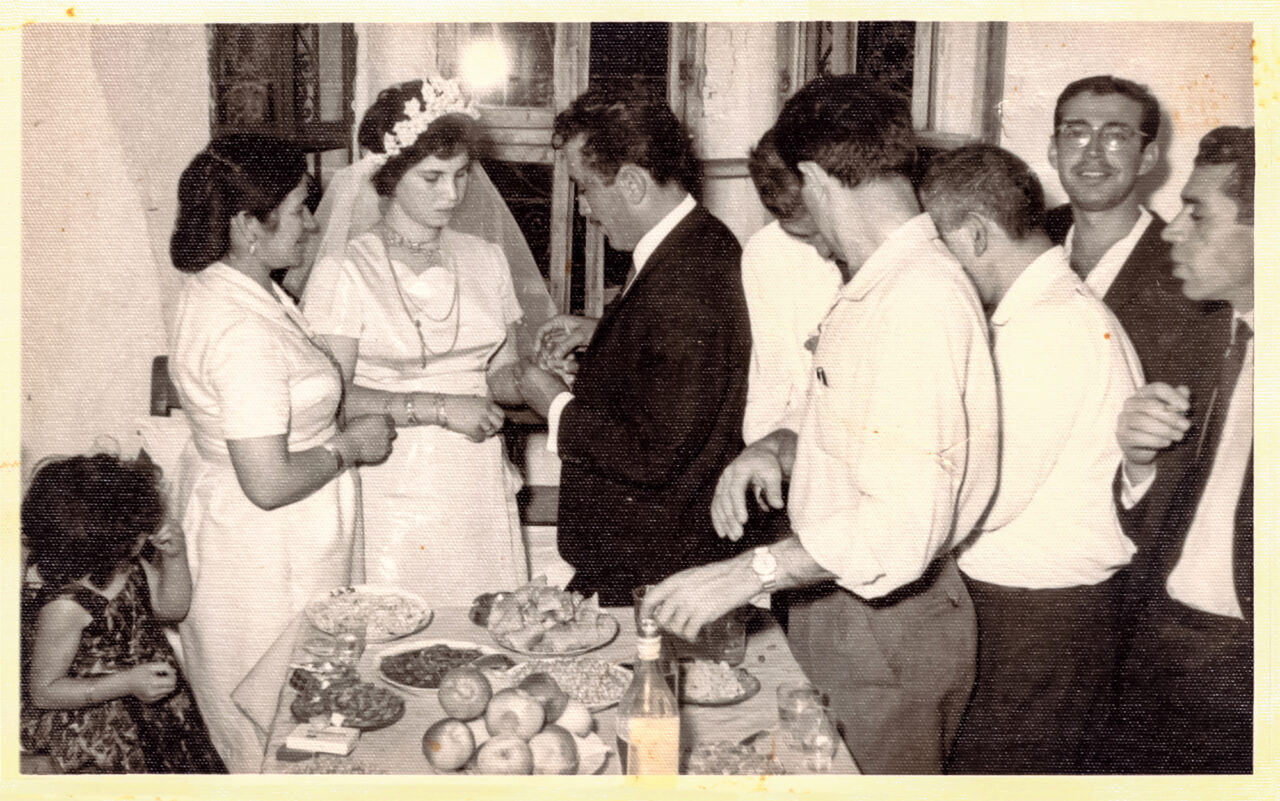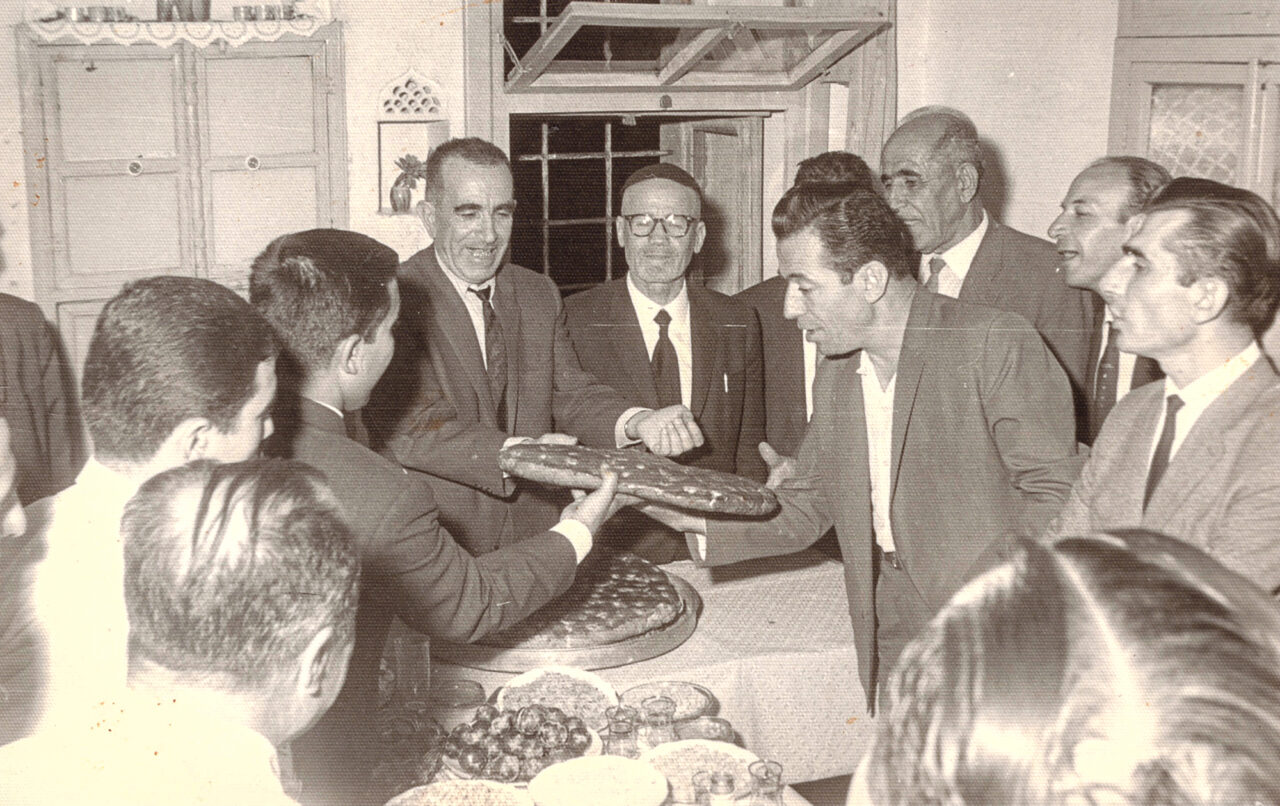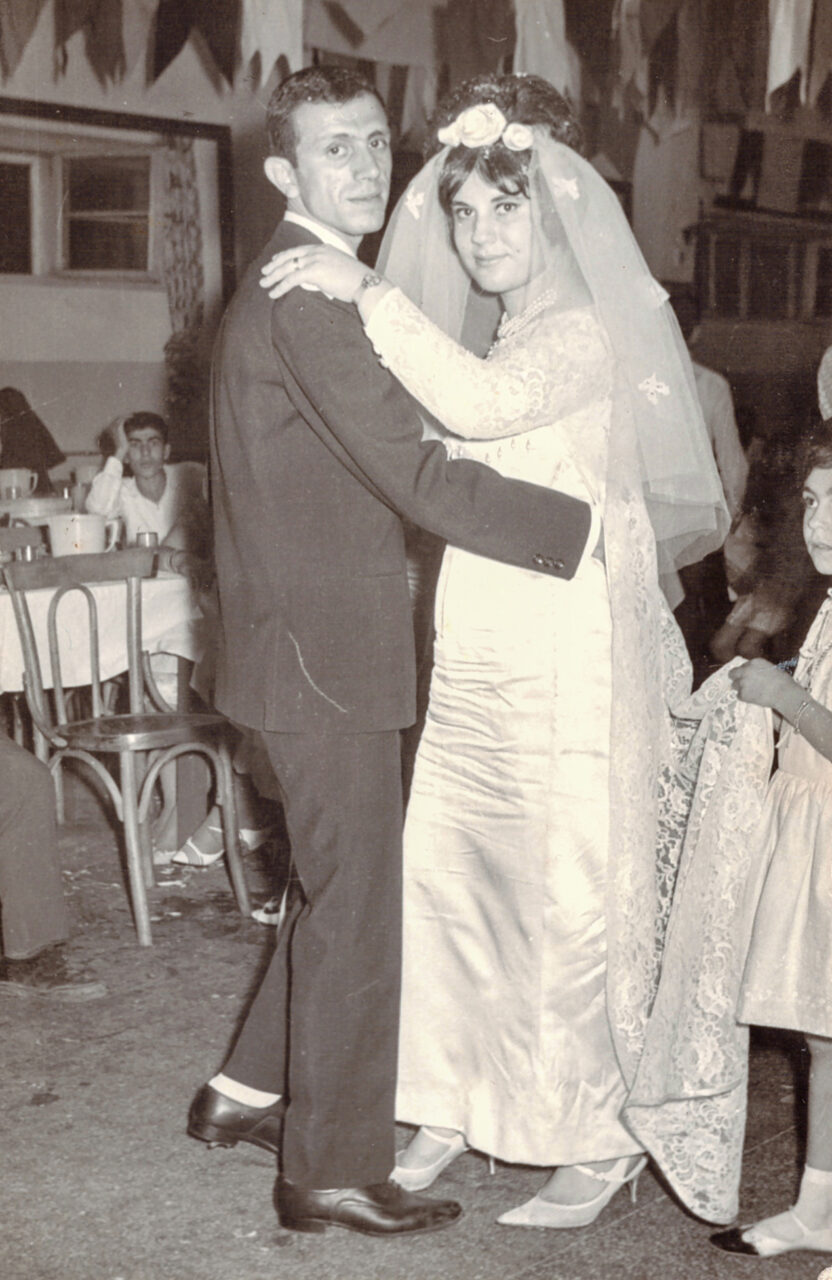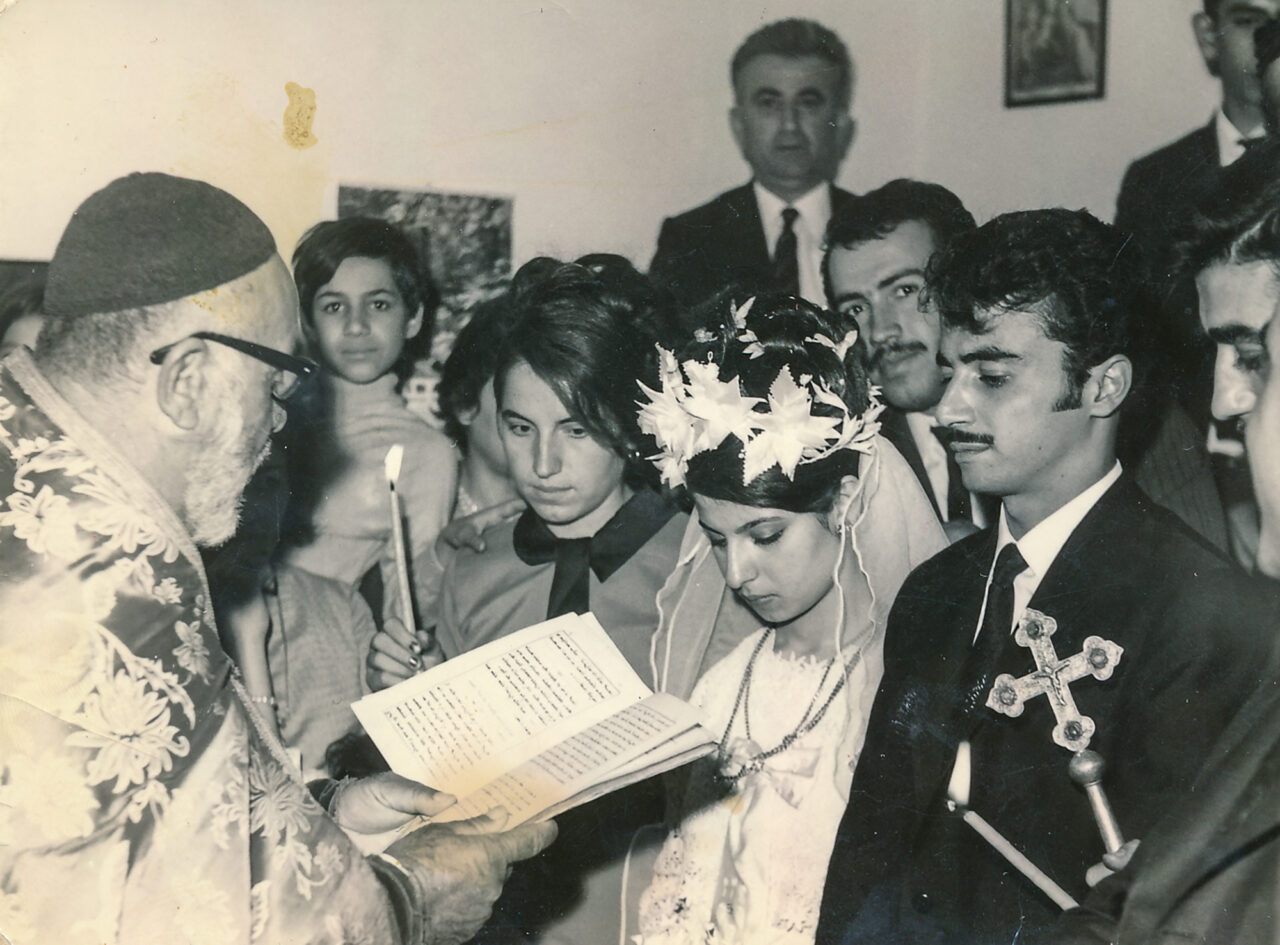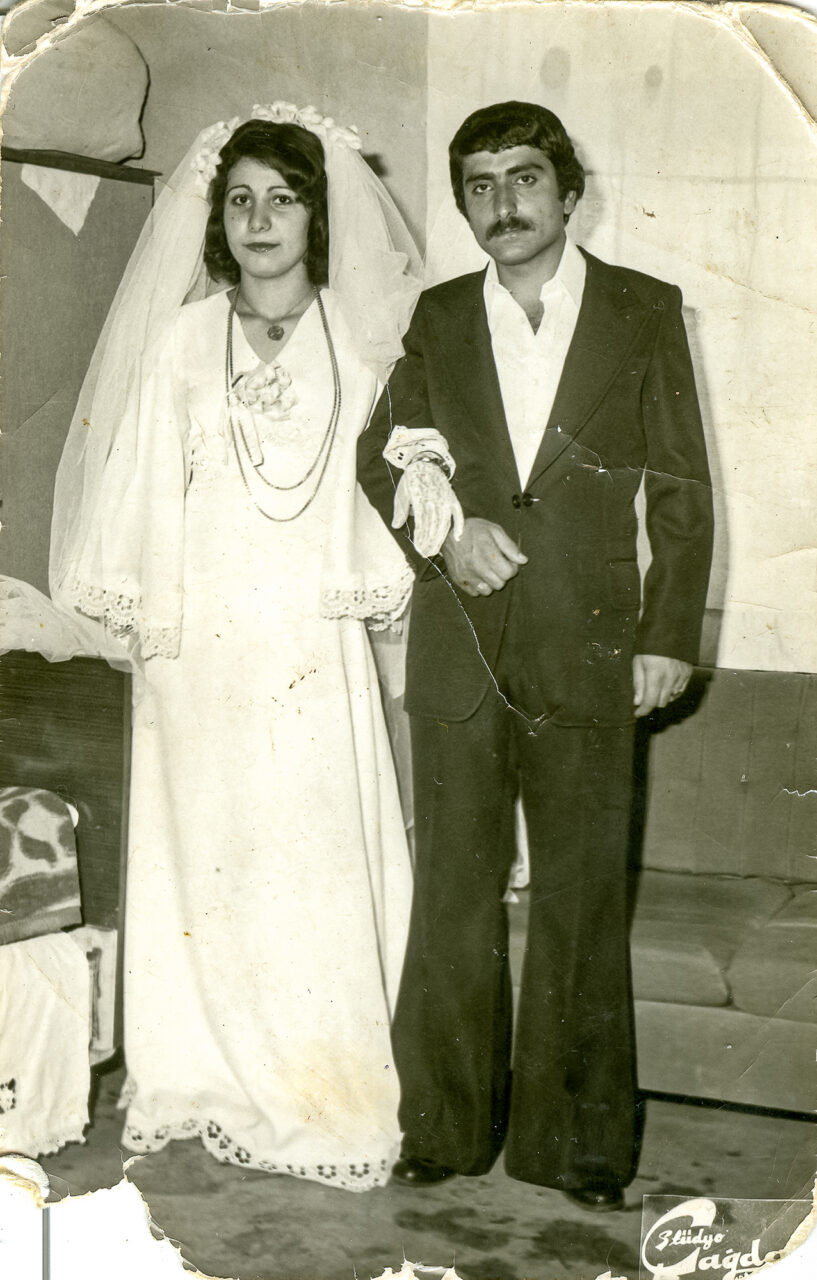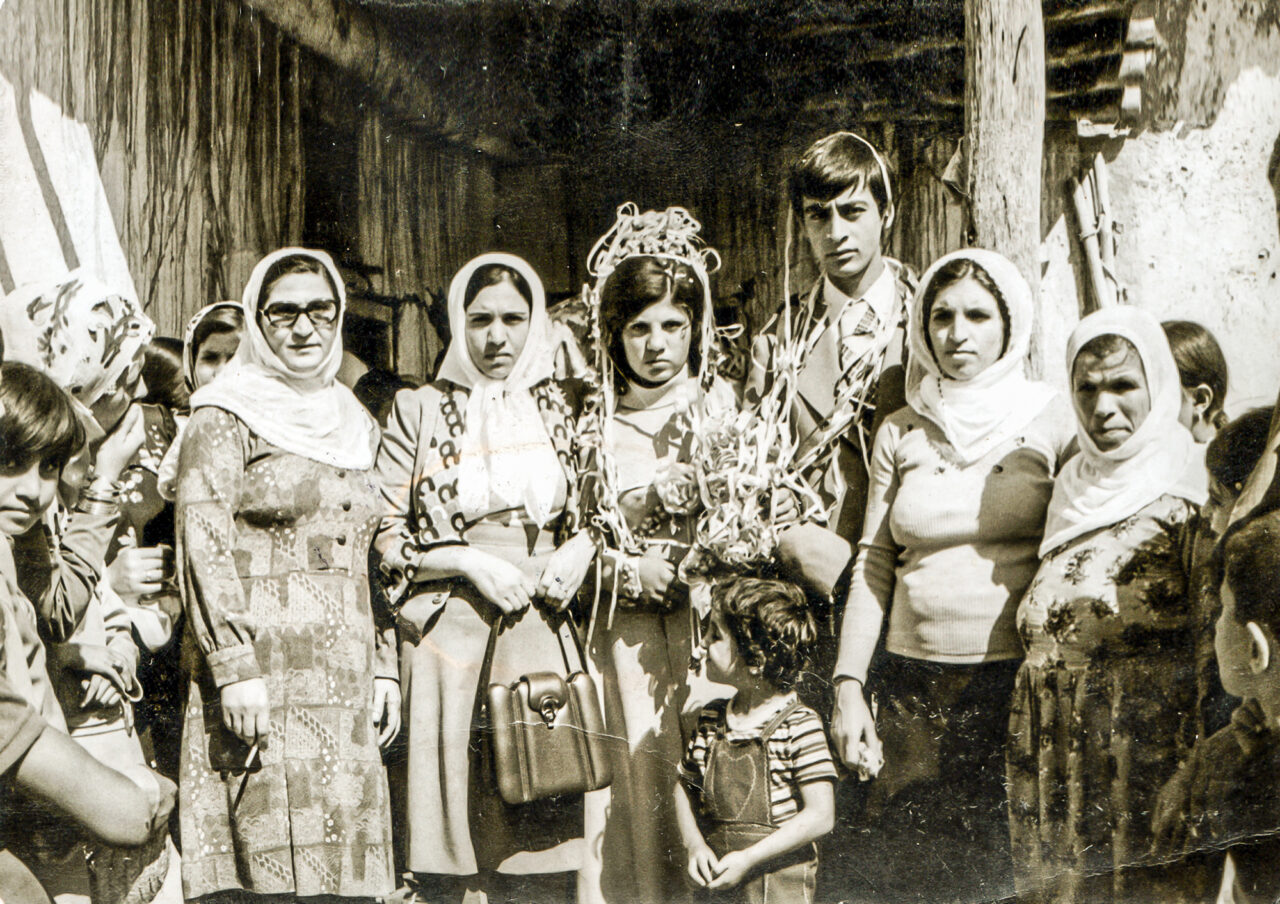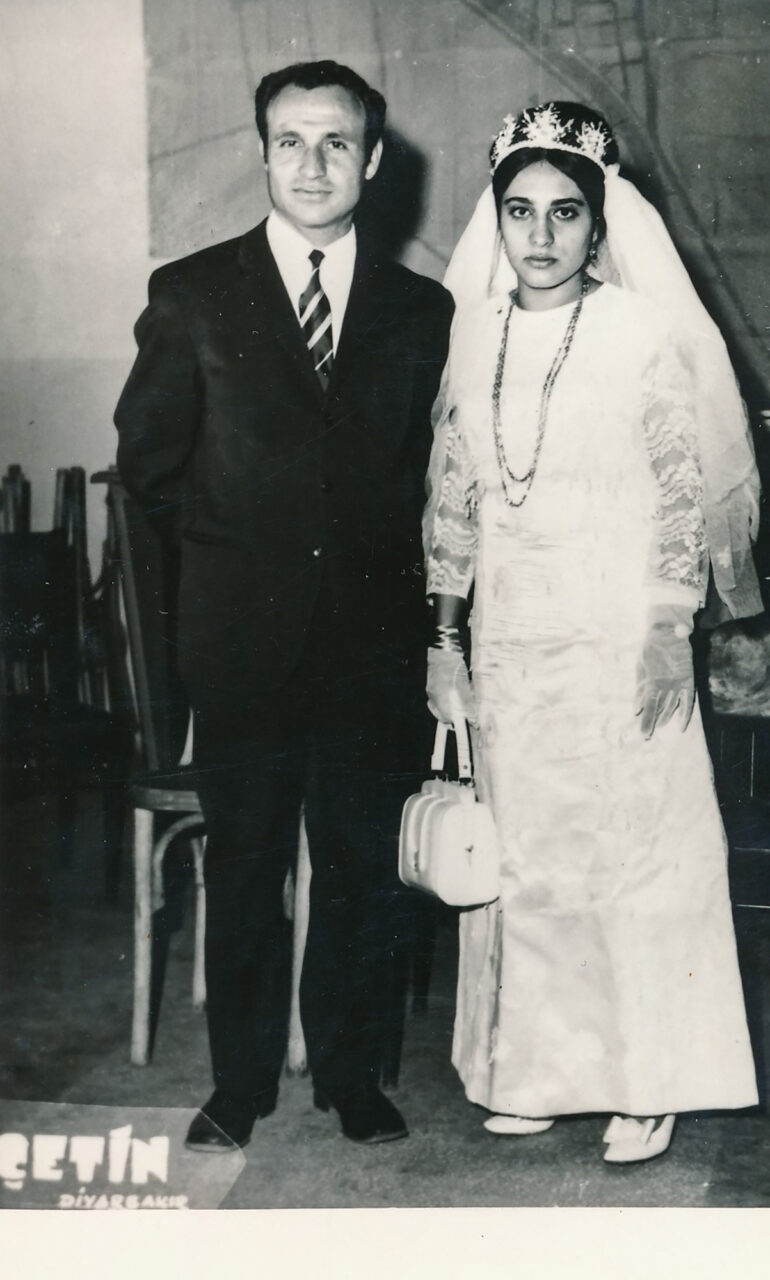The establishment of a new family, the foundation of a “home” takes place through a series of customs accumulated over millennia. In the past, this process was one when the future couple did not have much say in choosing each other and forming a union: They surrendered to tradition, and from asking for a girl’s hand in marriage to dowry, engagement, sherbet, wedding and the nuptial night, each ritual has different symbols.
Writer Birsen İnal has written about each stage of this procedure in Diyarbakır culture and the “toy” [wedding ceremony] of Diyarbakır, while Can Şakarer has told the story of the path that leads to marriage according to Assyrian traditions.
In the past, wedding ceremonies in Diyarbekir were known as “toy”. Our toy would continue for three days and three nights. Some families would have even longer weddings that lasted seven days and seven nights. Since engagement, wedding and circumcision ceremonies held an important place in social life, the bride’s and groom’s sides would rigorously work to make sure everything was complete and the best. After all, the preparations of both sides, the deficiencies, the shopping, the gifts, what everyone wore, the musicians, the treats, the bride’s convoy, the baksheesh, the bride’s smile or sulk and her dance, everything could be discussed for months and even years in the neighbourhood. The nobility of some and the misery of others would become the talk of the town.
Mothers whose sons reach the age of marriage would first let friends and relatives know that they are on the lookout for a skilful, respectful prospective bride who is socially and culturally compatible with them and comes from a good family – and is, of course, beautiful. The most suitable candidate would be shown to the prospective groom from a distance. It was impossible for the couple to meet before the girl’s hand was asked for in marriage. In fact, many couples saw each other for the first time on the nuptial night.
The day to see a prospective bride was often Thursday. The görücü would be met with excitement and invited into the largest room of the house. The görücü would be a delegation made of the most reputable three or four women of the family, who could also talk well, and they would carefully examine the prospective bride, her family and every nook and cranny of the house, meticulously inspecting under carpets and couches and the lamps and thresholds. The prospective bride would enter the room with “diyazasının qızî” (the daughter of her maternal aunt) and under the pressure of all the eyes on her, kiss the hands of the elders. When the girl’s side left the room to prepare treats, the görücü would curiously ask each other questions.
If the delegation approved of the candidate-bride, then, after some chit-chat, the most reputable of the görücü, the elder “bibi” (paternal aunt) would ask for her hand in marriage. As the bibi spoke, the candidate-groom’s “dazosî” (his maternal aunt) would roll the “tentene qoqası” (ball of lace) in her hand under the couch: This was a test to tell if dust had accumulated under the couch.
There is a saying that goes, ‘kız evi naz evi’, or, the home of the bride is the home of coyness. The asking for the girl’s hand in marriage sometimes took a week and sometimes as long as a month, and both the prospective groom and his family would be thoroughly investigated.
Birsen İnal, Researcher, Writer
Once the decision was made, the good news would be given to the father, without even bothering to tell the prospective groom. Believed to be an auspicious time, before the evening prayers on a Thursday, a delegation of family elders would knock on the door of the bride’s home. After a little chit-chat, the groom’s elder maternal uncle would ask for the prospective bride’s hand in marriage, starting his words with the phrase, “Allah’ın emri, peygamberin kavliyle” [“By God’s order and the prophet’s consent”]. The bride’s father then would let one of his own family’s elders speak to state that they agree, a hodja would say prayers and the young would kiss the hands of the elders. The men would decide upon the bridewealth, the amount of marriage payment, and treats would begin to be served.
The tradition of the sherbet rendezvous, made for a month later, was like the present-day betrothal ceremony. Three days before the sherbet meeting, the groom’s side would prepare, on a large tray, a set of clothes and underwear, a pair of slippers, socks, an engagement ring, a bracelet, cologne, rose water, biscuits, lokum [Turkish delight] and sherbet dye, and cover it with a silk bundle. The natura¹ of the neighbourhood would pick up the tray, and the porter of the household would pick up a sack of confectionery and they would be sent to the bride’s home.
Only the first-degree, elder relatives of both sides would be invited to drink sherbet, the young were not invited. The bride would not be taken to the hairdresser beforehand, in fact, some families would not even allow the application of make-up. Her hair would be made up at home, without exaggeration. A day before the meeting, her hair would be wrapped with pieces of cloth or wire to make ringlets. The sherbet dress, often made of blue or pink ‘duchess’ satin, embroidered around the chest with droplet beads, and its arms made of organza, would be ordered at Armenian or Assyrian female tailors.
At the sherbet ceremony, women and men would be hosted in separate rooms. If it had been decided upon beforehand, the religious engagement would also be performed on the same evening with the approval of their fathers. The rings would be placed on the couple’s fingers by someone who has a happy marriage and children, accompanied by the chanting of zılgıt. After the rings are placed, the red sherbet would be served out using a red, patterned glass sherbet set, or metal glasses brought back by hajis. This was followed by lokum [Turkish delight] and biscuits.
The entertainment at a sherbet ceremony was limited. The women would sing and dance and sometimes play the darbuka and the tambourine.
No weddings would be held between two bayram, or religious holidays. A date after Kurban Bayramı, the Feast of the Sacrifice, would be set for the wedding and the sherbet ceremony would end.
Birsen İnal
¹ Natura: The person who carried the belongings of the clients of the public bath from their homes to and back from the bath.
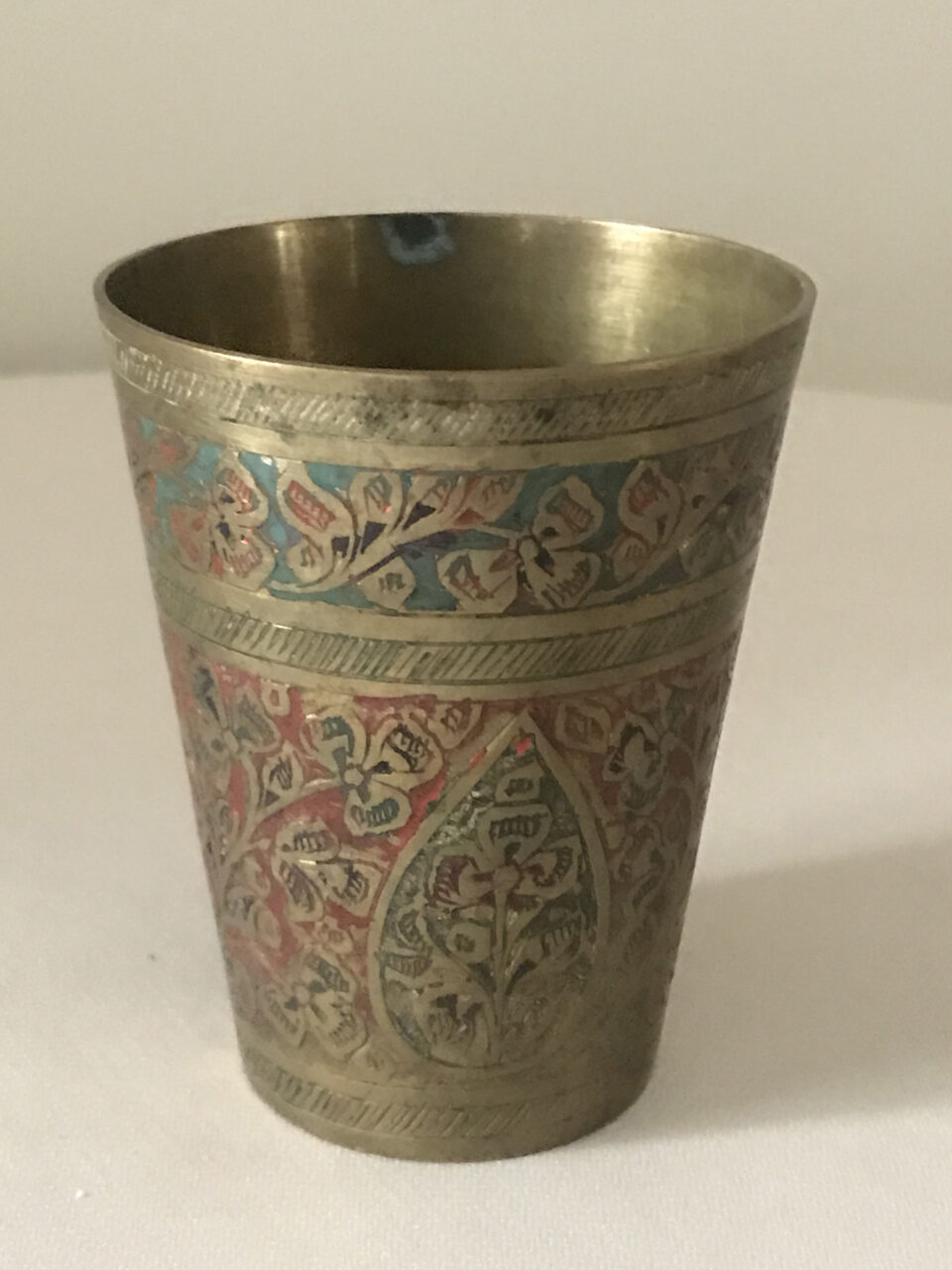
The engagement ceremony was similar to the sherbet ceremony, but on a larger scale. During times when the invitation card had not been invented, women indekçi (town criers) would announce the invitation. Women who knew the neighbourhood well, who could talk a good talk and who were often not particularly well-off would act as indekçi. She would tie a red chiffon ribbon around her arm and knock on doors to invite friends, relatives and neighbours.
No one would attend without an invitation. The seating plan in the courtyard would be drawn up accordingly. The elderly and leaders of the community would sit at the upper head of the table, while those who had beautiful singing voices or danced well sat near the musicians, and the younger invitees would take their places at the lower head of the table. Some of those who had not been invited would observe the ceremony from the street entrance. The bride’s household and the groom’s household would sit at separate ends of the courtyard. The entertainment would not begin before the groom’s household arrived. Back in the day, on days of entertainment like weddings and engagements, figures like Çalgıcî Êyşe and Hedî ile Medî would perform. In the past, for the engagement ceremony and bride’s henna ceremony, female musicians were preferred, however, over the years, many young musicians like Kenan Temiz and İbrahim Macit were also invited. Male musicians would take the stage from behind a curtain during the women’s entertainment.
For the bride, a chair decorated with embroidered covers would be placed in the centre of the courtyard. Accompanied by a maya sung by a woman with a beautiful, melancholy voice, she would be brought to the chair, with a woman from each family in her arms. She would be showered in sequins, colourful bride’s sweets and metal coins. It was great fun for children to collect the coins. Yet for the poor bride, smiling was forbidden, she had to hang her head and sulk. If she smiled or held her head up high, or displayed any unnecessary movement, the gossip would begin.
After the dancing, the engagement tray would be brought accompanied by zılgıt, and jokes and laughter would continue. Women’s underwear would be referred to by names such as “hat for the twins” and “sugar sack”. After the jewellery items were presented one by one, they would be pinned onto the bride’s dress by the sister-in-laws of the prospective couple. The neighbours would often bring dowry goods in order to meet requirements for the new home. No one would come without a gift.
When the time to serve treats came, first sherbet, and then biscuits and lokum [Turkish delight] would be served. This would be followed by women’s folk dances, which hold a special place in Diyarbakır folklore. The most famous of these was the bıçak [knife] dance, where a woman would play the role of the father, and another woman would play the daughter. Tugging at their arms, two women who knew the dance well would be persistently invited to dance. It was considered embarrassing to volunteer for the dance without being invited.
Birsen İnal
The phrase “Qız beşikte, çeyizî sandıxta” is a saying that daughters’ mothers in Diyarbekir never forget. Thus, they begin to collect dowry in a chest many years before the time of marriage. The importance ascribed to dowry, an instrument of cultural transmission, by the mother, this unreciprocated labour, would not only show the mother’s love for her daughter, but also her talent. The jewellery was the pride of the groom’s home, while the dowry was the pride of the bride’s home. The mother would make sure that she kept hold of a few pieces of her own dowry to hand them down to her daughter. Our Christian neighbours, who were highly capable in the preparation of dowry, would offer all manners of support.
When the marriage stage was reached, the first was to make a list of requirements. The talented women and girls among both relatives and neighbours would race to help with dowry preparation. Shopping was one of the most challenging episodes of wedding preparations. The bibi, diyaza and yenge [close relatives] of the bride decided what to buy as if they were to use the goods themselves, a lot of weddings would be cancelled during this stage.
The bride’s bed was the most important item of the dowry, and it would be ordered to female master bedmakers. Blue, pink and lilac were the most preferred colours for quilt covers made of atlas silk. Bed covers were made of damask, and pillow lining would be made of the atlas silk used for the quilt. Later, lace which completely covered the surface of pillow corners became fashionable.
After the dowry was prepared, there was also a tradition of serme, or display. Everything would be taken out of chests and bundles, washed and ironed. The display of dowry was always an opportunity to show-off. It was seen as shameful for a girl to not have, or have little dowry.
A certain system determined by custom would be applied in the display of the dowry, and objects from the bride’s and groom’s home were displayed separately. There were ‘displayer/dresser’ women in every neighbourhood who would do this work well, and professionally. Coats, costumes, dresses and blouses would be hung out on hangers on lines. Bedstead and kitchen sets would be hung out on lines to show their embroidery work. This was the section that attracted the most attention in the dowry display. Viewers would be transported to mountains full of flowers, meadows full of spring flowers and rose gardens full of roses of every colour and tone. Covers, bundles, prayer rugs, bath sheets and purses, made with silk threads, ribbons and silver wire, with their interesting, stylized models would be placed on display.
Birsen İnal
Cross-stitched canvasses of the legendary Shahmaran were indispensable for any dowry. Kurdish rugs and carpets, weaved knot-by-knot with talent and love would take their place in the seat of honour.
An important part of the dowry was the gift bundles. Separate bundles would be prepared for the close relatives of the groom, the best man and his wife. The most important of all was the groom’s bundle, personally embroidered by the bride.
The dowry would remain on display for three days. Some families would count the dowry to draw up a document similar to a duplicate deed. The dowry was the property of the bride. In the rare case of a disagreement, the entire dowry listed, or its monetary worth, would be handed to the bride.
The bride’s room would be delicately decorated with the bride’s dowry. There had to be a carpet on the wall of the brass bedstead. These chamber hangings would transport viewers to a fairy tale world. Those with compositions featuring the kızkaçıran, or eloping of the girl theme, the kahveci güzeli, or beautiful coffeemaker theme, and deer and peacocks were the most popular. The fundamental furniture of the bride’s room included a two-sided walnut wardrobe, a walnut chest, a walnut lattice, ivory drawer set, with a silver jewellery box, a couch and walnut bedside cabinet.
Birsen İnal
A day before the henna night, the bride would visit the hamam, the public bath, with her friends and family. The bride’s henna night would be held on a Tuesday, the groom’s on a Wednesday evening. Some families would hold them on the same day. For henna, specially made copper bowls would be used. The henna, in powder form, would be placed in this bowl, and after being decorated with colourful bride’s sweets and silver-gilt thread, it would be wrapped in the silk “qademe boxça” (satin or velvet bundle woven with golden or silver string) prepared by the groom’s mother. The henna bundle would be placed on the head of the neighbourhood natura and sent to the bride’s home with candles and snacks, accompanied by two or three other women. Meanwhile because of the sounds of tîlîlî (zılgıt) being chanted, everyone would rush to the doors and windows along the streets.
The groom’s henna ceremony would have both music and drinking with meze. Although alcoholic beverages are forbidden according to Islamic belief, no one would adopt that perspective. The fact that tribes lived together and side-by-side in Diyarbakır had a naturalizing impact.
The bride would be dressed sometimes in her wedding dress, sometimes in a special henna dress and sometimes a Maraş-made bindallı and silk shalwar. The kneading of henna was a ceremony in itself. The henna would be kneaded by an “azep” (single), strong, knowledgeable and experienced girl, accompanied by zılgıt and prayers. As the entertainment continued, they would go out into the courtyard, with someone from the groom’s family who could folk-dance well, with the henna bowl in her hand, followed by the bride and the other girls, and chanting zılgıt. After they kissed the hands of the elders, they would take their places in adorned chairs. The tray would be passed from hand to hand until the candles went out, and henna songs would be sung without instruments. Before the henna was applied, the groom’s mother would place a gold coin in the bride’s palm. In accordance with custom, henna would be applied only on the right palm of the bride, the gold coin would be placed in her palm, and the hand would be wrapped with a silk handkerchief prepared by her mother. Meanwhile, a woman with a beautiful voice would sing long and melancholy songs to make the bride and her mother cry.
The henna night at the groom’s house would also begin when darkness descended. Many who attended would wear a dark blue or brown suit, and a white shirt made of Mongolian silk. It was the custom of hoodlums to leave the upper buttons of the shirt unbuttoned. Jakola brand, egg-heeled shoes, or five-string shoes would be worn, with white socks visible. The groom’s close friends, and especially those who could dance local dances well would wear shalwar and tie Acem [Iranian], Lahor or Agabani silk waistbands. Women were only able to watch the groom’s henna ceremony from rooftops.
The groom would not be bought any special dress for the henna night, and until the henna was applied, he would work hardest to serve the guests. Once the musicians began to play the henna songs, his friends would begin to dance around the groom sitting on a cross-stitched and embroidered cushion in the middle of the courtyard with the henna bowl changing hands. Henna folksongs would be sung in the form of a call-and-response battle of words in Kurdish, Turkish and Arabic. Then, when the groom stood up to the dance, the guests would race to shower him with money, and these were the most enjoyable moments for the musicians.
Birsen İnal
On the morning of the wedding, the wife of the best man and the sister-in-law would take the bride to the “ondêleci” (hairdresser). The cost of the wedding would be met by the groom’s family. Once the bride’s hair and make-up were finished, she would be dressed in her wedding dress, and taken to her father’s home.
As her socks were being put on, her mother would put some money in a sock. When the bride arrived at the groom’s home, this money would be taken by the woman who washed the bride’s feet. An impoverished woman would wash the bride’s feet in a basin by pouring water from a pitcher. Her mother-in-law would then pour the water used to wash her feet in the pantry, with the belief that it brings abundance.
After she was dressed, the bride would kiss the hands of her father and family elders and bid farewell to them. Especially the embrace and weeping of bride and father would bring tears to the eyes of everyone.
In the past, the bride was taken from her family’s house by walking there. Two people would take the bride by her arm, and they would lead followed by the crowd and chanting zılgıt through the streets. In time, automobiles began to be used. Once the bride was taken from her father’s house, she would be taken through the city streets, and would have to overcome certain obstacles to pass through êl kapısı¹ and enter the courtyard. Each obstacle had a different meaning and the first obstacle was to pass through the sweets and coins thrown from the roof by the groom and the best man. She would be given a pitcher filled with water and a sprig of parsley, which she could not see because of the bride’s veil she was wearing, and she had to hit it hard on the ground to break it. Then she would be given an egg, which she had to break on the door. Now she had to pass through her mother-in-law’s legs. The mother-in-law would wait at the door, with the Koran in one hand, and a knife in the other. Once the bride bent over and passed through the open legs of the mother-in-law, she completed all the obstacles.
At the morning edhan, the groom’s home would place the food to be cooked in the “nıqra”² on the pot stand. The indispensable dishes of wedding were, in summer tırşik, pilav [rice] and dolma [stuffed leaves] and in winter kuru fasulye and pilav [beans and rice]. Baklava, sargı burma, zerde and su böreği would be prepared together beforehand.
The congregation leaving the mosque after the noon prayer would come to the wedding house as a group, and following the mawlid recital, lunch would be served. The poor, the mentally ill and the children of the neighbourhood would also join in this collective lunch. The bride’s side would not stay until the evening entertainment and would be seen off until the head of the street after lunch. Meanwhile, men and musicians would be slowly arriving for the groom’s shave and dressing ceremony in the evening.
Birsen İnal
¹ Êl kapısı: The foreigner’s door. In old Diyarbakır, this was the term used for the door of the husband’s home.
² Nıqra: A large copper cauldron with two handles.
The final phase of the wedding was the nuptial night. As entertainment continued in the courtyard, the best man’s wife and a relative of her staying at the groom’s home would take the bride by her arms and take her to her room. They would cover her face with the wedding veil, and wait with her until the groom came to the room. There was also a tradition of having a boy child lie down on the nuptial bed, with the hope that the firstborn child is male.
A tray piled up with a great variety of seasonal fruit, confectionery and nuts, prepared by the sağdıç, the best man, would be placed in the bride’s room. Before the nuptial night, the bride and groom would definitely taste each one of these snacks on the tray. It was believed that whatever you ate off that tray would also be presented to you in heaven. Therefore, known as “teberik”, the snacks on this tray would also be presented to all guests on the morning of the wedding.
On the day of the nuptial night, his barber would shave the groom with a ceremony. As baksheesh, guests would pin money on the peşkir during the shave. This would be the longest shave the groom would ever have. Both to increase the excitement of the upcoming night, and for accuracy, the barber would keep spending more and more time on the shave. During the shave, the folksong “Berber” [“Barber”] would be sung, followed by “Berber Gazeli”.
The groom would be dressed in his clothes, passed from hand to hand, one by one and accompanied by folk songs and maya, and his friends would lift him up into the air on the chair he was sitting, three times. As the end of the wedding was announced, the final act was the Diyarbekir men’s halay, danced by the groom and his friends.
Birsen İnal
When the entertainment was over, some guests would leave, while those who remained took the groom out. When a gazel or maya was being chanted, the group stopped and listened, and when it ended they chanted tekbir, and marched on. When the groom’s entourage passed through narrow streets, curious eyes would watch them from windows, doors and rooftops. Since it was believed to bring bad luck, and everyone feared djinns, the entourage would not pass under örtme¹ as it wandered the streets. When they arrived at “küçe qapîsı” (the street entrance of the home), a glass stolen from the bride’s home on henna nights would be placed in the groom’s hand, and he would ask to break it. Once the groom broke the glass, in accordance with tradition, the entourage would shout “Belen kuvvet” and his friends would give him a push around the waist to pass him through the door. However, this push would sometimes be exaggerated to such an extent the groom would be no better than having received a beating. Everyone but the best man would head home. The groom would first perform ablution, then kiss his mother’s hand and ask for her prayers.
The bride would meet the groom standing. The groom would perform two rekat of prayers on the seccade, the prayer rug, rolled out by the bride, and after the prayer, would hand over yüz görümlüğü, the traditional payment made for seeing the bride’s face, to the bride before he lifted her veil. The yüz görümlüğü would often come in the form of beşibirlik, a set of five coins of gold.
In the event that, on entering the nuptial chamber, the couple experienced a negative situation due to a pre-existing condition or excitement, the best man would swiftly take the groom to the waters of Dingilhava, Küpelî or Balıxlî. If this did not help, in some families, custom would prevail and the bride would immediately be taken back to her father’s home.
Visits to see the bride that began ten days after the wedding would continue for almost a year. Close or distant, all relatives, friends and neighbours would go to see the bride with gifts they managed to purchase according to their income. Gifts would be selected in consideration of the new home’s needs, or whatever was missing. Guests would be offered coffee, tea, and in the summer, lemonade, çörek [tea cakes] or “kehkî”, a type of pastry with ginger, dried figs and raisins, prepared at home and taken to neighbourhood bakeries to be baked.
Birsen İnal
¹ Örtme: The vaulted structure over a street.
In the olden days of Diyarbakır, the path to marriage of Assyrian youngsters was adorned with many traditions. Both neighbours and relatives would begin to tell parents of young people who had reached the age of marriage and men who had completed their military service, “Come on, let’s get these kids married, let’s see them married”. Thus family elders and people in their circle, too, begin to look out for a suitable candidate. Since we Assyrians are a society slightly closed off to the outside world, it is rare for a woman and man to meet outside and attempt to get married.
Family girls, recommended by neighbours and relatives are first examined by family elders, if the decision is made, then it is announced to the woman’s family. Then, an opportunity is arranged for the prospective couple to see each other. The appropriate place for this is either church, or the home of a common friend. If there is already an established friendship between the families, this place may also be the girl’s home. The prospective couple see each other, and if they both also agree, it is time to ask for the woman’s hand in marriage. This will bring an official status to the arrangement.
There is a saying that goes, ‘kız evi naz evi’, or, the home of the bride is the home of coyness. The bride’s family asks for time to consider, and eventually they invite the groom’s family to their home. So, another visit is carried out to the bride’s home and the bride’s hand is now officially asked for. The bride’s relatives pass the word to each other and eventually, a family elder says, “May it be for benefit” and approves. At this point, the groom’s side presents a gift of jewellery to the bride. This is often a golden cross, the symbol of our religion. Thus, the couple are bound with a promise to wed.
Can Şakarer, President of the Board of Trustees of the Foundation of the Diyarbakır Virgin Mary Ancient Assyrian Church
After a certain while, the groom’s side informs the bride’s side that they intend to visit for the formal engagement. On the date they agree on, the groom’s side prepares the tray that includes the jewellery he will pin, the gifts he will give, the basket of drinks and the various chocolates and almond paste. Meanwhile, the bride’s side prepares various meze and dishes to host the guests.
On the set day, the groom’s side heads out to the bride’s home with the priest, the best man (kirve¹) and close relatives. After the welcoming ceremony, the priest blesses the rings and they are placed on the fingers of the couple. Someone from the groom’s side serves the drinks and confectionery to the people present. At this point, guests from the groom’s side give the bride her gifts. Then everyone takes their place at the dinner table. If there is music and singing, the engagement ceremony can last until the morning.
After the engagement ceremony, the groom will carry out another visit to the bride’s home, and a feast-like dinner table is prepared for this visit. During this period, the groom’s side also invites the bride’s side to dinner at their home. At religious holidays, one side or the other definitely invites the other to dinner. During the invite, the groom’s side presents a gift, often jewellery, to the bride’s side. And the same goes for New Year, when jewellery is presented as a gift to the bride, and both sides give gifts to each other. These reciprocal visits continue. They are highly beneficial in that they allow the families of both groom and bride to get to know each other.
Can Şakarer
¹ Kirve: The person selected from the bride or groom’s family friends to facilitate marriage rituals and assist in the process.
Then, a date is set by the bride’s side for the official engagement. When the groom’s side visit the bride’s side to ask for the birth certificate for engagement preparations, jewellery is presented as a gift to the bride. Only close relatives of both sides are invited to the official engagement ceremony. The groom’s side organizes a feast for guests that visit the home after the engagement ceremony.
Then the two sides agree on a date for the wedding. Often, a day on the weekend is chosen. On the Friday night, the henna night is held at the bride’s home. The henna night is attended by the close relatives of the groom and invitees of the bride’s side. For this ceremony, the groom’s family prepares a çörek around 40 centimetres in diameter, confectionery and gifts. A prayer is said by the priest, then the trio formed of the priest, the groom’s best man and bride’s maid of honour, extending one hand each, lift a çörek up high and break it. The talent lies in breaking apart a larger part of the çörek.
After the ceremony, the dinner begins. And after dinner, there is always entertainment. As the entertainment continues, henna is kneaded. Games are played, zılgıt are chanted. As henna is applied to the bride’s palm, a gold coin is also pressed into her palm. Henna is applied to the groom’s hand all the guests’ hands present on the night. If desired, people may take home a part of henna back home with them. Sometimes the ceremony continues until the morning. On Saturday, everyone tries to shed the exhaustion of the night before, because Sunday will come with a whole lot of exhaustion itself.
On Saturday, it is time for the groom’s best man take charge. When a child is born, either a relative of the family, or someone very close to them volunteers to become the child’s godfather or godmother. If the child is male it is carried by a man, if it is female, it is carried by a woman. Kirvelik is a serious duty in our tradition; when two families become kirve to each other, they cannot intermarry for seven generations.
The best man invites the prospective groom and his friends to the hamam, the public bath. We call this “damat hamamı”, the groom’s bath. During “damat hamamı”, the public bath does not admit any other person from the outside. A small entertainment is organized for the session. As for the bride, the kirve, or maid of honour organizes “gelin hamamı”, the bride’s bath.
Can Şakarer
Sunday is wedding day. Towards noon, the barber is invited to the groom’s home, and the groom’s shave takes place accompanied by music and drinks. In the afternoon, the groom’s family, along with one or two families close to them go together to pick up the bride. For this, an appropriate vehicle for the neighbourhood and street of the bride’s home is selected –either a decorated horse-carriage, or a decorated automobile. At the bride’s home, coffee or a liqueur is offered to the guests. From there, the entourage heads to the church for the religious engagement ceremony. Invitees, the bride’s side and groom’s side are present at the church.
The priest never accepts to carry out the religious engagement without the official document of engagement. After the ceremony is completed, the bride, the groom, both their parents and the best maid and best man line up to accept congratulations. The first piece of jewellery and the first gift is presented to the bride by the groom’s family. Then the turn for congratulations and gifts belongs to the groom’s best man and then the invitees.
In the past, weddings were held at homes, however, after a certain time, wedding halls were preferred. Our weddings are always with food, drink and live music. Everyone is full of joy, zılgıt are chanted, Turkish, Assyrian and Armenian, and some Kurdish songs and folk songs are sung. After a certain point of the night, the bride and groom depart for their room, and a while later the wedding ends. On Monday, everyone rests.
On Tuesday, the best man organizes an invite to the groom’s side. Here, too, invitees have fun like the wedding. The dishes offered will include kelle paça, kibe and bumbar; however, the various other dishes of our Diyarbakır also feature at the feast tables.
Can Şakarer
Translation: Nazım Dikbaş
BIBLIOGRAPHY
Birsen İnal
İnal, B. (2013) Özümsen Diyarbekir, Lîs Yayınevi, Diyarbakır.
Can Şakarer
Source persons: Adnan Palakoğlu, Janet Bedro



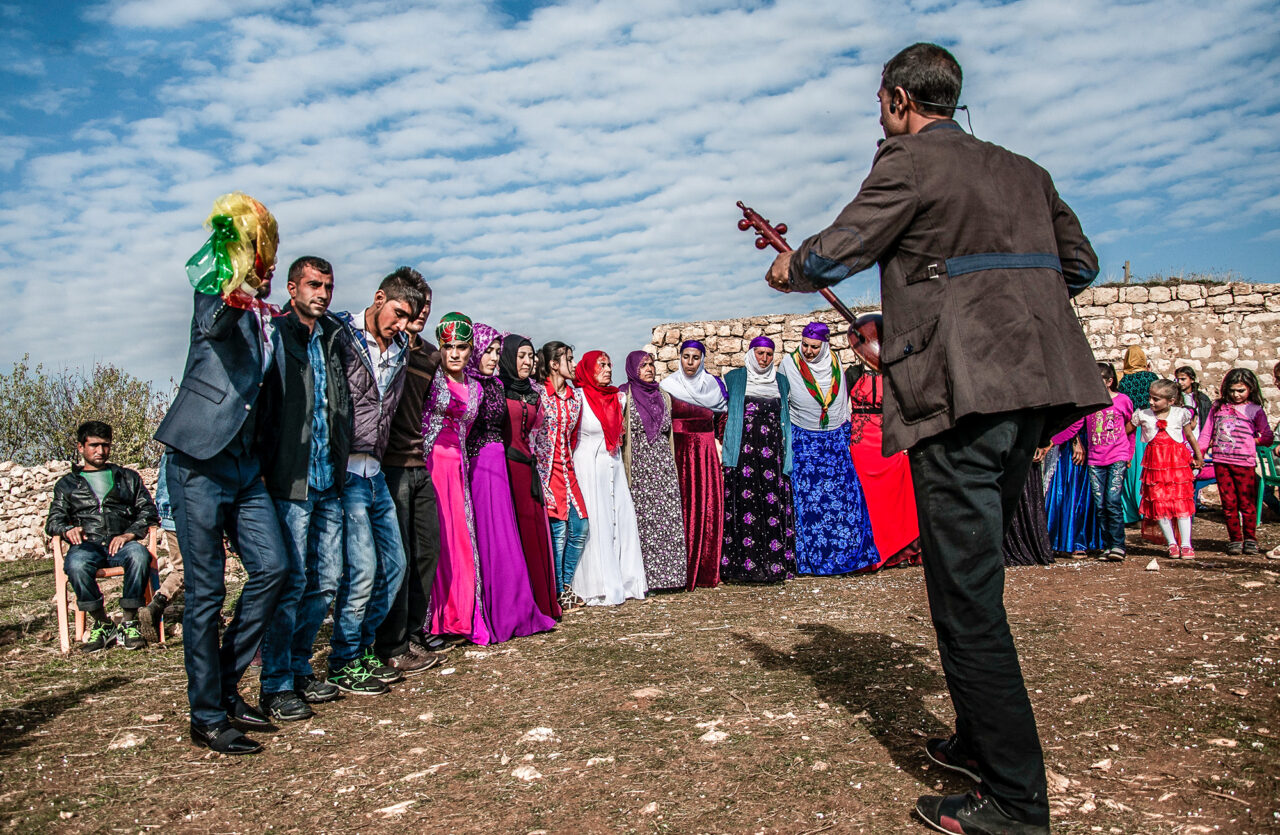

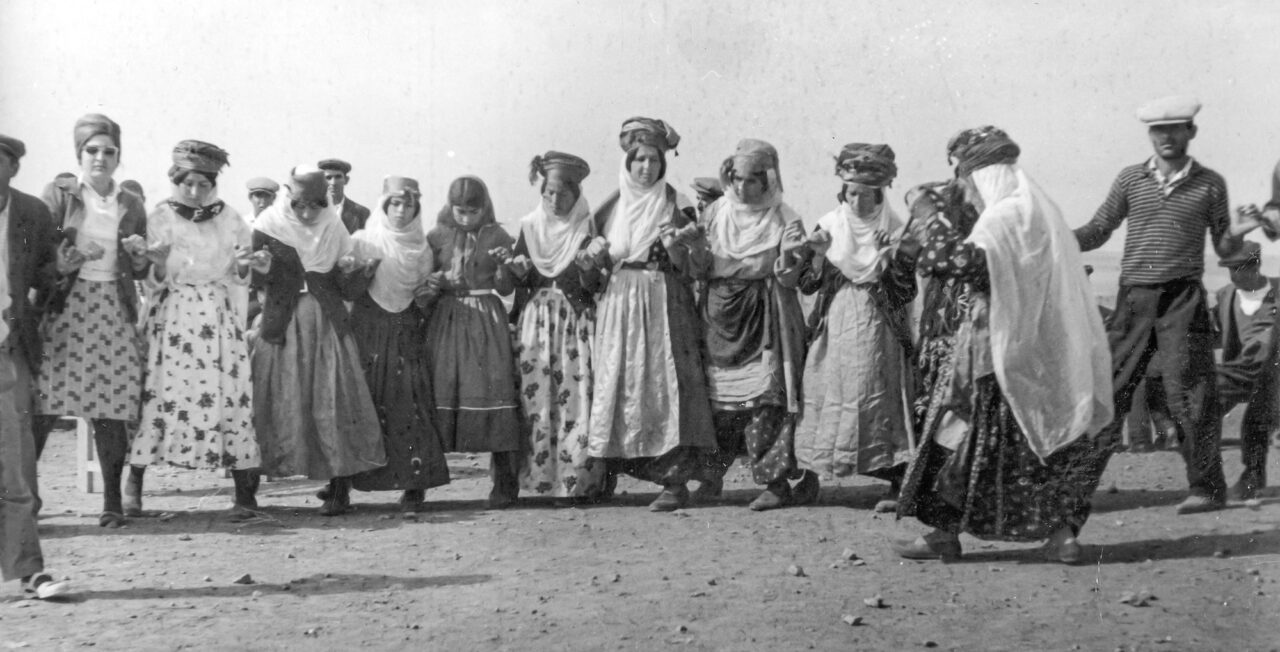

![Among various dowry furniture, like chests and wardrobes, two items held a special place: The sewing machine and the yazma [headscarf] chest. This is an image of Remziye Özakbulut’s dowry, who told us about the public bath rituals of Diyarbakır in our “The baths of Diyarbakır” section. (Photograph: Eren Karakuzu)](https://diyarbakirhafizasi.org/wp-content/uploads/2020/11/5_Dugun-1280x853.jpg)
